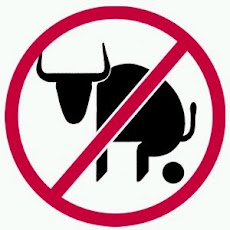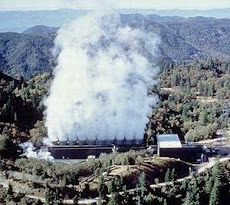
April 21, 2009
Prospectors hope new Calif. gold rush will pan out
By TRACIE CONE Associated Press Writer
There's still gold in California's Sierra Nevada foothills, and a new rush is under way to find it.
Not since the Great Depression have so many hard-luck people been lured by prospecting, hoping to find their fortune tumbling down a mountain stream. The recession and high gold prices are helping to fuel the latest gold craze, especially among workers who have lost jobs.
"I guess there's always hope. At home, I don't have any right now," said Steve Biorck, a concrete finisher who headed west because construction work dried up in Tennessee. Now he spends days standing knee-deep in an icy creek coaxing gold flakes from a swirling pan of gravel.
Miners who locate an unclaimed area can pay a $170 fee to the federal government for access to the public land. Most claims are along the 120 miles of steep granite outcrops and rushing riverbeds that are part of California's Mother Lode, a narrow band of gold-rich terrain.
When Don Wetter was in the Army, he guarded Fort Knox in Kentucky, home of the U.S. Treasury's gold depository. Now that he's been discharged, Wetter hopes to find some gold of his own using an anticipated loan for a "grubstake," an old mining term for money to sustain the search.
Wetter, a 22-year-old tree trimmer from Troy, Mich., said he wanted to turn to hunt for gold because most of his customers lost their jobs or moved away.
Many would-be gold panners are drawn to the South Fork of the American River, where the 1849 discovery of nuggets at Sutter's Mill launched the largest human migration in the Western Hemisphere. The Depression brought another wave of miners in the 1930s.
"It's hard to keep my equipment in stock," said Albert Fausel, the third-generation owner of the nearby Old Placerville Hardware store, which was founded to sell sluices, picks and pans to the original '49ers.
Back then, the price of gold was $16 an ounce. Today it hovers around $1,000.
The store's wood floors used to creak under the weight of recreational rafters and fisherman. Now prospectors are some of the biggest shoppers.
"A lot of people are out of jobs and know where the gold holes are," Fausel said.
Between October 2007 and September 2008, the Bureau of Land Management in California issued gold miners 3,413 permits, or claims, to search for gold. That figure compared with 1,986 claims in 2006. So far this fiscal year, the agency has issued 1,444 claims.
Many miners believe that only 10 percent of the gold in the Sierra Nevada was discovered in the original gold rush. They are also excited by the prospect of stumbling onto buried treasure.
"A lady was walking over there, kicked a stone with her toe and picked up a nugget just like that," said Russ Kurz, who at 77 with a bushy white beard looks like a grizzled miner. He points to a sandbar on the American River near Coloma.
"I was walking my dog once and went to pick up a rock and pulled a long nugget straight out of the sand," he said. "It was worth about $6,500 — and that was 13 years ago."
Brent Shock of Jamestown now teaches the newbies he calls "the bonanza people." He says sandbars, cracks in bedrock and low-pressure eddies behind boulders are prime places to set up sluices, which are metal or plastic channels designed to catch gold.
Spring is the best time to hunt for gold as snow melt churns streams and rivers, potentially uncovering new riches.
"There's got to be a lot of it sitting around somewhere," said Eric Tring of Roseville as he panned with his 13-year-old daughter.
The gold fields are becoming so popular that Todd Osborne has had to guard a claim that has been in his family since the 1960s near a remote mountain creek.
A handmade sign with the image of a rifle and the words "private claim" dissuades most intruders, but novices often are unaware that miners can make a stake on public land.
"A couple of years ago there'd be nobody out here," said Osborne, 41, who began prospecting full-time last year when his work as an arborist slowed.
Osborne, who says both of his grandfathers turned to prospecting during the Depression, knows the people who sold supplies to miners were the ones who stayed rich. One of the most notable examples was denim maker Levi Strauss.
Osborne owns the patent on the Bazooka Gold Trap sluice that he builds with his prospecting partner, Adam Schiffner. The two can process up to 350 gallons of streambed gravel a day with it, yielding $100 to $1,000 in gold flakes, with an average of $150.
They are betting that the instability of the dollar will drive gold prices even higher and entice more people to use his sluice.
"Whether they get rich or not," Osborne said, "we've got part of their grubstake."
___
On the Net:
Bureau of Land Management page on obtaining a gold claim:
http://www.blm.gov/ca/caso/iac/faqmc.html
http://license.icopyright.net/user/viewContent.act?clipid=262182726&mode=cnc&tag=3.5721%3Ficx_id%3D20090422-stolfiler-tn0206



















No comments:
Post a Comment